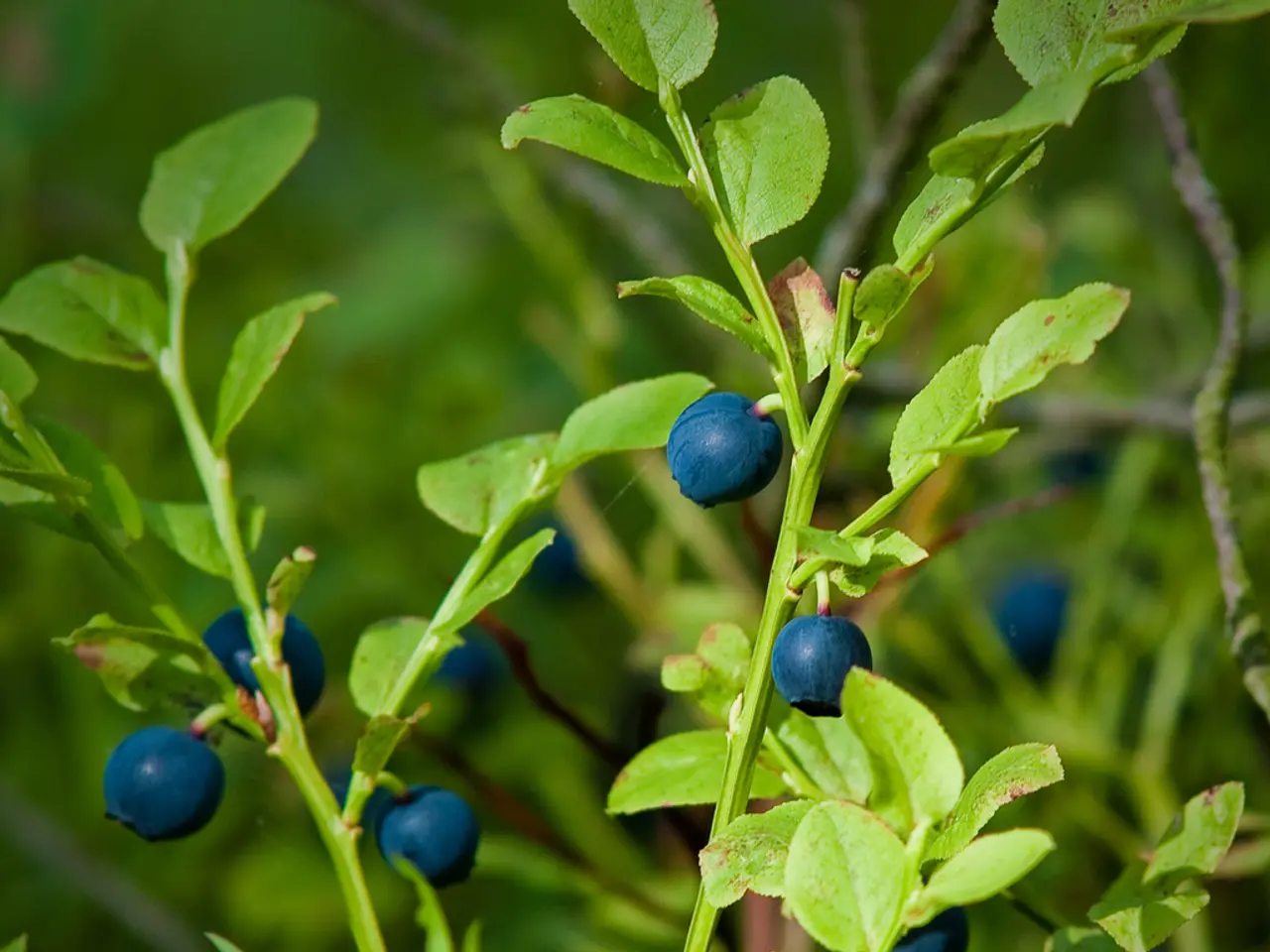Methods for Cultivating Thornless Blackberries: Crucial Guidelines for a Thriving Crop Yield
In the world of gardening, maintaining the health and productivity of your plants is essential. This is particularly true for thornless blackberries, a delightful addition to any garden. By following a few simple steps, you can ensure these plants remain healthy, productive, and bursting with fruit.
The Best Time for Pruning
The recommended time to prune thornless blackberries is annually after the summer harvest, or in late summer to early autumn. This timing allows for the removal of old fruiting canes and promotes new growth for the next season [1][5].
Tools for the Job
Equipment-wise, you'll need sharp pruning shears or secateurs, thick gloves (even thornless varieties can have small prickles), and optionally, loppers for thicker canes [1].
Pruning Steps
- Removing Old Fruiting Canes: Cut the entire cane down to the base after it has fruited. These are usually the two-year-old canes that bore fruit in the current season and are no longer productive [1][5].
- Tip New Primocanes: When these canes grow to about 5-6 feet tall, prune their tips to encourage lateral branching. Laterals should then be shortened to 3-4 feet to promote fruiting sites and manageable growth [5].
- Thin New Canes: Keep spacing good by removing weaker canes to encourage strong, healthy growth.
- Training: Support thornless blackberry canes on a trellis or horizontal wires for easier pruning and harvest [1][5].
- Clean Up: Remove any diseased or damaged canes during pruning to maintain plant health and air circulation.
Additional Tips
Mulching in early spring can help with fruit production, while watering well after planting or during dry spells in the first growing season [1]. A trellis system helps guide canes, keeps them off the ground, and improves airflow around the plants. Support ties are useful for securing canes to the trellis, with garden tape or soft twine working well and not damaging stems.
After use, tools should be cleaned with a solution of bleach and water, dried thoroughly, and oiled to prevent rust. It's also crucial to remember that dull pruning shears can damage plants.
Embrace Thornless Blackberries
Thornless blackberries are a type of fruit that can be easily added to a garden, offering not only delicious fruit but also supporting a thriving ecosystem. With proper care and pruning, these plants will continue to delight you for years to come.
Sources:
[1] Meyers, L. (2021). The Ultimate Guide to Pruning Thornless Blackberries. [Online]. Available: https://www.gardeningknowhow.com/edible/fruits/blackberry/blackberry-pruning-guide.htm
[5] Meyers, L. (2020). Pruning Thornless Blackberries: A Step-by-Step Guide. [Online]. Available: https://www.gardeningknowhow.com/edible/fruits/blackberry/pruning-thornless-blackberries.htm
Further cultivation of thornless blackberries can enhance your home-and-garden lifestyle, as these plants add a touch of beauty and deliver delicious fruits. Regular pruning, as demonstrated in the steps provided, is crucial to maintain the health and productivity of your thornless blackberry bushes.




